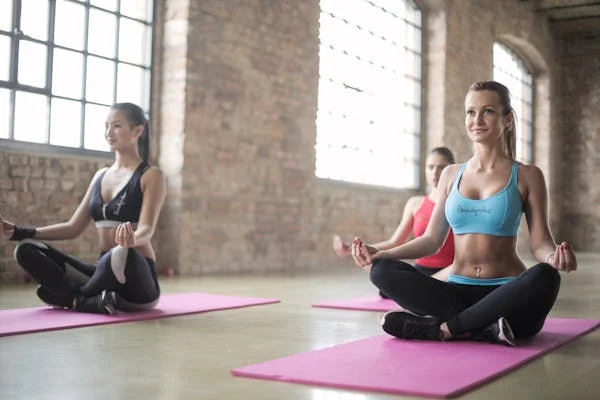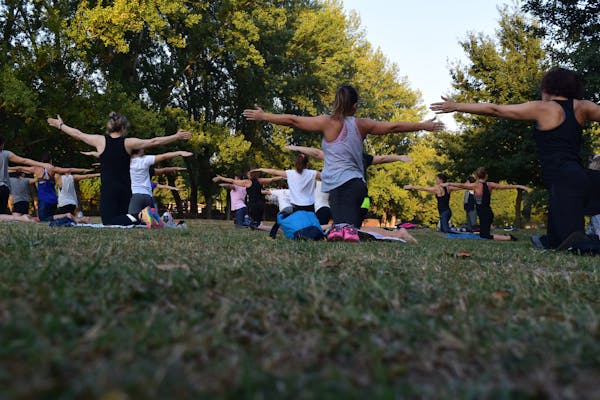Table of Contents
Introduction
Yoga to Lower Blood Pressure: Blood pressure, or hypertension in professional terms, is one of the most common yet serious health conditions today. Left untreated, this can lead to harsh complications like heart disease, stroke, and even kidney failure.
While medicines are widely prescribed, they alone may not be the cure. Yoga is an ancient practice in which it helps to combine asanas, which are physical postures, some breathing exercises known as pranayama and meditation.
Such a holistic treatment will reduce one’s blood pressure naturally. With this guide, we’ll begin by exploring how high blood pressure is caused. We’ll move on to what yoga can offer, then outline specific yoga poses and techniques you can begin to use yourself to attain healthier hearts.
Exploring the Relation Between Yoga and Blood Pressure
Healthy Heart
A heart is the center organ ensuring the body gets its blood that has been oxygenated. This works only if there is a normal range of levels of blood pressure. If such levels rise and keep doing so, the heart is strained further and sustains damage over time.
Yoga remains the best option to overcome stress, which contributes to improved flow of blood with a pacification of the nervous system, resulting in low-pressure blood flow within the veins, and thus happens to be among the greatest partners for a good cardiovascular system.

What Causes Hypertension
1. Risk Factors for High Blood Pressure A sedentary life will result in overweightness leading to a condition of inefficiency in the overall cardiovascular system.
Dietary Habits: The leading cause of hypertension is high sodium intake, low potassium levels, and processed foods.
Chronic Stress: The hormones that are released during chronic stress include cortisol, which increases blood pressure.
2. Poor Lifestyle Habits That Can Lead to Hypertension
Unhealthy habits that can raise blood pressure include smoking, too much alcohol, and lack of sleep. After the unhealthy habits have been pinpointed, then it becomes easy to work on how to keep one’s heart healthy.
How Yoga Helps Reduce Blood Pressure Naturally
1. Lower Stress Levels with Yoga
Yoga can activate the parasympathetic nervous system, which is more popularly known as the “rest and digest” mode. This assists in countering the “fight or flight” response caused by stress. The result is that blood pressure and heart rate decrease.
2. Promotes Blood Flow and Oxygen Delivery
Yoga stretches and opens up the blood vessels, making them more elastic and improving blood flow. Pranayama, or controlled breathing, increases oxygen in the blood, which further supports cardiovascular efficiency.
3. Hormonal Balance and Yoga
Stress hormones such as adrenaline and cortisol cause high blood pressure. Yoga helps regulate these hormones, reducing their impact and promoting emotional well-being.
Effective Yoga Poses to Lower Blood Pressure
Some of the most effective poses to help manage hypertension include the following:
1. Child’s Pose (Balasana)
Benefits: Relaxation, mind-calming
How to do:
Sit on the floor with your big toes touching.
Sitting back on your heels, stretch forward with your arms.
Put your forehead on the mat and breathe.
Hold for 1-3 minutes.
2. Downward-Facing Dog (Adho Mukha Svanasana)
Benefits: Strengthens blood flow and elongates the spine and hamstrings.
How to do:
Lie on your hands and knees.
Bring toes under you, pull your hips up to the ceiling then lift heels some inches off from the floor, relax the neck, breathe 5-10 breaths.
3. Setu Bandhasana – Bridge Pose
Benefit: It expands the chest and facilitates the improved flow of blood towards the heart.
How:
Lie on your back with the knees bent, soles flat on the ground.
Place the arms by the side of the body, palms down.
Press into your feet and lift hips up towards ceiling.
Hold 30 seconds to 1 minute.
4. Legs-Up-the-Wall Pose (Viparita Karani)
Relax tension and circulates blood
How to do:
Sit sideways to the wall, lying down and putting legs against the wall
Lie down sideways with arms straight out and hands upwards
Rest for 5-15 minutes with deep breath


Pranayama Techniques to Lower Blood Pressure
1. Alternate Nostril Breathing (Nadi Shodhana)
Benefits: Balances the nervous system and reduces stress.
How to Do:
Sit comfortably.
Close your right nostril using your thumb and breathe in from the left nostril.
Now, close your left nostril and breathe out through the right.
Repeat it for 5 minutes.
2. Bee Breath (Bhramari)
Benefits: Calms the mind and slows down the heart rate.
How to Practice:
Close your eyes and relax the face.
Inhale deeply and while exhaling, hum like a bee.
Repeat 5-7 times.
Scientific Evidence Behind Yoga for Low Blood Pressure
The studies have shown that the frequent practice of yoga significantly lowers the levels of systolic and diastolic blood pressures. Research reflects that its practice, along with the combination of asanas, pranayama, and meditation, is well-suited for managing hypertension.
For example, it has been documented in the Journal of Hypertension that the level in the participants that had been practicing yoga for three months went down by 5-10 mmHg.
Visit a Doctor: For people with high blood pressure, it is advised to consult a doctor before practicing yoga.
Practice Gently: Headstands and other inversion postures that put pressure on the head must be avoided.
Daily Practice: Practice daily for better results than practicing occasionally.
Healthy Lifestyle with Yoga
Healthy Lifestyle with yoga is the best combination
Healthy Eating: Eat more fruits, vegetables, and whole grains. These should have less salt and processed food.
Engage in low-impact physical activities, such as brisk walking or swimming, for regular physical activity.


Practice yoga with mindfulness to achieve the best impact in controlling stress.
How to Make Yoga a Daily Routine
Secret: Benefit from its value of blood pressure reduction by giving it a space in your daily life. Here are some tips that are helpful in keeping yoga as a lifestyle and keeping you on your feet with regularity:
1. Set an Schedule
You will want to find a specific time, for example, in the morning or in the evening when your mind is less disturbed, and you’re less distracted to do yoga.
You should start practicing at least 20-30 minutes each time, then increase more once you become used to the exercise.
2. Prepare Comfortable Place
You want to choose a quiet space at your house for the practice.
Make use of a yoga mat and prepare other props like cushions or blocks in advance.
3. Begin Slowly and Gradually Build Up
If you’re new to yoga, begin with simple poses and breathing exercises.
Focus on correct posture and alignment to avoid injury and maximize benefits.
4. Combine Yoga with Meditation
Add 5–10 minutes of meditation after your yoga session to enhance relaxation and mindfulness.
Techniques such as mindful breathing or guided imagery can further help reduce blood pressure.
5. Stay Motivated with Goals
Set achievable, short-term goals like practicing yoga three times a week.
Follow the journey and note milestones to motivate yourself.
Other Yoga Poses That Help In Reducing High Blood Pressure
5. Cat-Cow Pose (Marjaryasana-Bitilasana)
It stretches the spine, boosts blood circulation, and soothes the mind.
How to Practice:
Begin on all fours, with hands under shoulders and knees under hips.
Inhale, curling head and tailbone into the back, like cow arch.
Exhale, and round back, bringing chin toward the chest.
Continue for 5–10 repetitions, moving in sync with your breath.
6. Mountain Pose (Tadasana)
Benefits: Works your spine, balance, and helps develop attention to your breath
How to Do It:
Stand with feet together, arms down at your sides.
Engage your feet, and stretch your arms up overhead.
Breathe into your rhythm for 1–2 minutes, keeping it steady.
7. Reclined Bound Angle Pose (Supta Baddha Konasana)
Benefits: Opens chest and hips to release tension and tightness.
How to Do It:
Lie on your back with the soles of your feet touching and knees falling outward.
Place your arms by your sides or overhead for an added stretch.
Take a few minutes to calm down and breathe deeply for 5–10 minutes.
Lifestyle Recommendations to Supplement Yoga to Lower Blood Pressure
Yoga is most effective when combined with other healthy habits.
1. Adopt a Healthy Diet for the Heart
Eat more fruits, vegetables, whole grains, and lean proteins.
Reduce processed foods, saturated fats, high-sodium snacks.
2. Keep Physically Active
Engage in light to moderate activities which may include walking, swimming or cycling, and yoga.
Maintain at least 150 minutes of physical activity a week.
3. Practice Stress Management
Keep mindfulness techniques, like meditating or journaling, as part of your daily routine.
Don’t overcommit; focus on taking care of yourself.
4. Monitor Your Blood Pressure Regularly
Keep a log of your reading to measure your progress.
Use these findings in your daily life and in your yoga practice as required.


Conclusion
Yoga is the natural holistic approach to treating high blood pressure. It helps circulate the blood, alleviates tension, and promotes relaxation-noble companions in the battle against hypertension.
Introduce these yoga postures and methods into your everyday routines and be ready to get a healthier and happier heart. Begin your yoga journey today toward lowering your blood pressure!

Pingback: Yoga for Blood Pressure Reduction: How It Helps Lower Your Numbers Naturally 2025 -